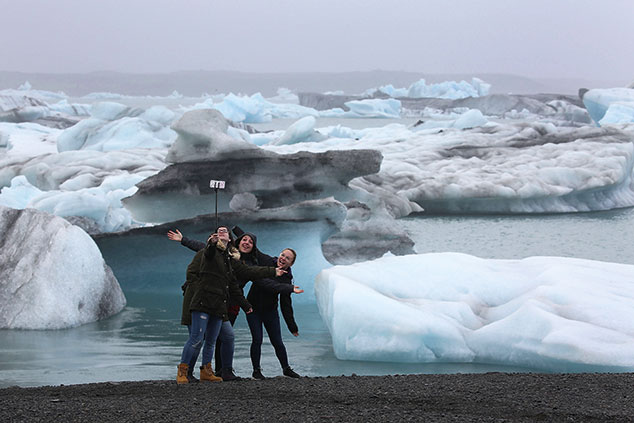
What happened?
In late 2008 Iceland suffered a spectacular collapse. It paid the price for a grotesquely unbalanced economy after a massive surge in the size of the banking system. During the mid-2000s, Iceland’s three biggest banks grew to 12 times GDP by offering foreigners – notably Britons and the Dutch – much higher interest rates on savings than they could get at home.
The banks then used the cash to snap up foreign assets, including companies, property, and football clubs. But the expansion was crazily reckless (and criminally so: several bank bosses ended up in prison). It relied on the banks sucking in ever-more deposits to fuel their operations and commitments. When their other key source of funding, short-term lending from wholesale bond markets, collapsed along with Lehman Brothers, bankruptcy swiftly followed.
Did the government try to bail them out?
It couldn’t. “They say that banks can get too big to fail; in our case the banks were too big to save,” says Bjarni Benediktsson, Iceland’s finance minister. “There was just absolutely no chance even if we wanted to try to bail them out.” The first to fall was Glitnir, the third-largest bank, which was working on expanding into India. Within days, the two largest banks – Kaupthing and Landsbankinn – had also collapsed.
What happened then?
Since a bailout would have been impossible – given the losses of $330,000 for every Icelander – the authorities “let” them default on $85bn in debt. To put this in perspective, the Icelandic financial regulator calculates that, for the US, an economy 1,100 times bigger at the time, this would be the equivalent of 300 Lehman Brothers deflating simultaneously.
The market reaction was savage: the equity market plunged 85% and Iceland’s currency fell by two-thirds against a basket of international currencies. But for ordinary Icelanders there were silver linings, at least – crucial ones. The government guaranteed Icelanders’ bank deposits, but not those of foreigners (see below) and the state protected households with a high-court ruling that loans indexed to foreign currencies were illegal (saving the large number of Icelanders who had foreign currency mortgage debt, which had soared as the currency tanked).
What was the economic fallout?
Massive pain. Iceland became the first European country since the UK in 1976 to get an IMF bailout to keep it afloat – of $2.1bn, or about $7,000 per Icelander – and it secured another $2.5bn from Scandinavian countries. That helped shore up domestic deposits and temper the impact of the bank-led slump. Capital controls were introduced to prevent foreigners selling local assets and sending the króna even further down (they were only lifted in 2017).
The economy shrank by 15%. Interest rates rose to 18% to shore up the króna and squeeze out the inflation induced by its collapse. Household spending fell by a quarter, and investment dropped by 75%. Government spending was slashed. But unemployment never hit the grim heights of southern Europe – topping out at less than 8%.
How is it doing ten years on?
Pretty well: the plunge in the currency allowed Iceland to regain competitiveness relatively quickly. Growth has exceeded 4% for three years. A key driver has been a fourfold surge in the number of tourists amid the króna’s slump. As many people visited Iceland in the seven years from 2010-2017 as had done so in the previous 62 years. Between 2010 and 2017 the proportion of Iceland’s exports accounted for by seafood has fallen from 25% to 17%; aluminium has fallen from 26% to 16%. Over the same period, tourism has rocketed from 19% to 42% of exports – around 12% of GDP.
In 2016, the number of visitors jumped 40% year on year. This surge has been vital, not just in driving the economic recovery, but also in bringing in foreign currency and letting Iceland lift its capital controls. Iceland is a case study in the value of having your own currency (in contrast to Ireland’s painful and protracted experience within the euro).
What else has Iceland got to offer?
Many Icelanders are worried that dependence on tourism is a hostage to fortune, as well as putting an undue strain on the island’s relatively basic infrastructure. What if a volcanic eruption like that in 2010 cuts off tourists for months or even years? In another respect, though, Iceland’s unusual geology is a bonus. Other key sectors continue to be fishing (and fish processing) and aluminium smelting; the second of these is a result of Iceland’s abundant cheap power.
It’s uniquely easy to exploit geothermal energy in Iceland thanks to its position on top of a gap in the Earth’s crust, and combined with hydroelectric dams it is one of very few countries whose power supply comes entirely from renewables. That, along with the cold weather, makes Iceland an exceptionally attractive location for data centres (large groups of networked computer servers), the essential infrastructure of the 21st-century economy. For Iceland, then, the future is looking bright.
We foresaw the crash
Icelandic banks’ high interest rates always looked suspiciously good. In February 2008, MoneyWeek contributor James Ferguson warned readers to stay away from Kaupthing and Icesave, despite their 6%-plus interest rates. “If it’s Icelandic, then be afraid; these banks are starting to be priced for bankruptcy risk and it’s not clear what protection UK savers might have with these foreign accounts.” He was bang on the money.
By then, credit markets were worried enough about Kaupthing, for instance, to charge it 6% more than five-year government bond yields to raise money. As Iceland couldn’t cover the cost of bailing out UK savers who thought they were covered by Iceland’s deposit guarantee scheme, the UK government stepped in. It took eight years of legal proceedings to get the cash back.